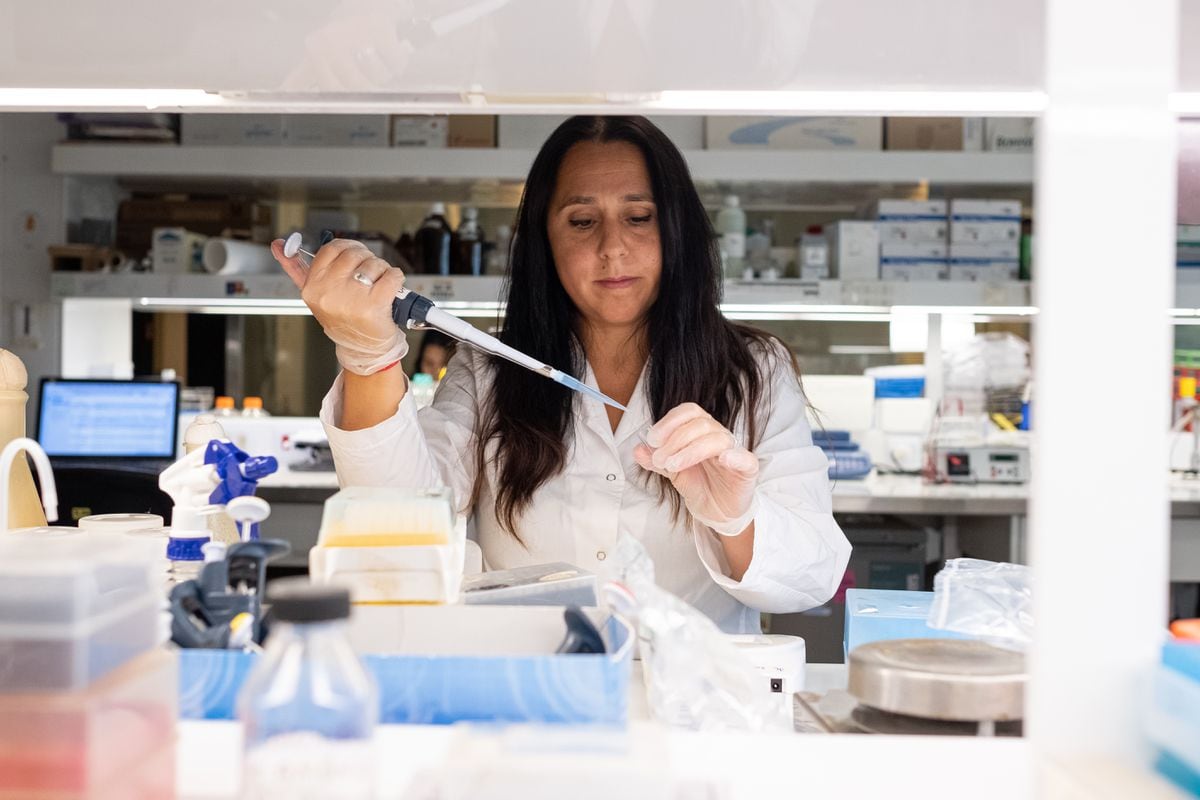- Click to share on Facebook (Opens in a new window)
- Click to share on Twitter (Opens in a new window)
- Click to share on LinkedIn (Opens in a new window)
- Click to email a friend (Opens in a new window)
How does a virus spread? 1:20
Editor's Note: Dr. Tom Frieden is a former director of the United States Centers for Disease Control and Prevention (CDC) and a former commissioner of the New York City Department of Health. He is currently president of Resolve to Save Lives, a global nonprofit initiative funded by Bloomberg Philanthropies, the Chan-Zuckerberg Initiative, and the Bill and Melinda Gates Foundation, and part of the global public health organization Vital Strategies. Resolve to Save Lives works with countries to prevent 100 million deaths and make the world safer against epidemics. Dr. Frieden is also a senior member of Global Health on the Council on Foreign Relations. Follow him on LinkedIn and Instagram and Twitter at @DrTomFrieden.
Dr. Cyrus Shahpar is director of Epidemic Prevention at Resolve to Save Lives.
(CNN) - A month ago, we detailed 19 critical gaps in our understanding of how we can best respond to the covid-19 pandemic. In the last month we have learned an incredible amount and have made progress answering 13 of these important questions. We urgently need answers to the other six questions, although we already have many of the answers we need to start stopping the pandemic.
This is what we currently know about these 19 questions, and where we still need more information, as we see from the Resolve to Save Lives team. As we learn more, we can strengthen our ability to do whatever it takes to reduce the spread of infection, improve patient survival, and mitigate social harm.
Here are the four most important questions we still need to answer (in addition, of course, to finding an effective treatment and vaccine):
• Do children transmit the virus commonly? - If this is not the case, opening schools will be easier;
• How are health workers infected? - so that we can protect them;
• Does this infection protect from future infections? - So that the recovered people can help society to recover;
• Which interventions work best to reduce the spread and minimize social and economic disruptions? - a question for which the answer will be different in different places.
Transmissibility
1. How does the virus spread?
In terms of transmission, the covid-19 is super SARS - it spreads the same way that SARS spreads, and more. It is transmitted mainly from symptomatic people to other people who are in close contact through respiratory droplets, by direct contact with infected people or by contact with contaminated objects and surfaces (fomites). Covid-19 can sometimes spread through asymptomatic people, and this is an area we need to learn much more about. Aerosol propagation appears to be limited to unique medical procedures and settings that can create wide-spread events like a choir practice.
2. How contagious is the virus (R0, or basic reproductive rate)?
Is high. It was 14 on the Diamond Princess cruise (a single infected person infecting an average of 14 people). The best current estimate is that the basic reproductive rate is between 2 and 2.5, about twice that of seasonal influenza. Some studies have reported higher estimates, including this look at 11 countries in Europe that had initial breeding numbers of 3.8. Even with physical distance measurements, the R0 was still 1.4, indicating continuous spread. It seems very difficult to put this rate below 1, although several countries have done so. This is what it will take to end the pandemic.
3. Is transmission from contaminated surfaces common?
We know that transmission by contact is possible, as documented in this description of a transmission of the virus through a church seat. It is probably more common in healthcare facilities (as was the case with SARS) and on cruise ships, which most frequently have contact with surfaces.
4. How effective is increasing ventilation to reduce risk?
We don't know how effective this is, but it's not likely to be high. Still, the World Health Organization (WHO) recommends increased ventilation in all phases of a pandemic because simulation studies show that increasing the ventilation rate would reduce influenza transmission, specifically aerosol transmission and perhaps in to a lesser extent, the transmission of large respiratory drops or indirect transmission by contact.
5. How much spread is there of asymptomatic cases?
There are some, but most covid-19 infections are not transmitted this way. Studies have shown that between 6% and 13% of cases were attributed to presymptomatic or asymptomatic transmission. This means that it will be more difficult, but not impossible, to control (although it can make complete elimination practically impossible until there is a vaccine), and we must adapt control measures to take into account presymptomatic and asymptomatic spread.
- How a century-old tuberculosis vaccine could help fight the new coronavirus
Tests
6. How sensitive are the PCR assays? What is the false negative rate of nasopharyngeal (or NP) specimens collected appropriately?
This is an area where we still have no answers. Much depends on how well the sample was taken, how much virus was spreading in the patient at the time, and the quality of the test. A Food and Drug Administration (FDA) document for LabCorp's RT-PCR Emergency Use Authorization has nearly 100% "positive agreement" and "negative agreement" for samples of the upper and lower airways.
In the Chinese experience literature, the sensitivity for PCR-based (Polymerase Chain Reaction) tests of nasopharyngeal swab specimens has been as low as 60% and as high as 85%. Specificity has been greater than sensitivity. The CDC Fact Sheet for Healthcare Providers, accompanying the test kits, contains information on false negative testing; however, it does not report a sensitivity or specificity. The CDC's Guide to Laboratories states: "FDA Sensitivity Assessment: The analytical sensitivity of the test will be further assessed by evaluating an FDA recommended reference material using an FDA developed protocol, if applicable and / or when available ”.
7. Is serology accurate and what is the time course of the antibody response?
The serology for the covid-19 is likely to be accurate if done well. The median time for seroconversion (antibody response) has been shown to be around 11 days for total antibody, 12 days for IgM (usually the first antibody produced in response to infection), and 14 days for IgG ( the most common and generally the longest antibody that fights viral infection). Antibodies were present in less than 40% of patients within one week of symptom onset, and in almost 100% of patients after 15 days. Eight days after the onset of symptoms, the sensitivity of the serology can rise above the PCR. In patient samples on days 8-14 after virus onset, the sensitivities of the antibodies (90%), IgM (73%), and IgG (54%) were all higher than those of the RNA test (54 %). Among patient samples in the later phase (days 15-39 from baseline), the antibody, IgM, and IgG sensitivities were 100%, 94%, and 80%, respectively.
More importantly, we still do not know whether the antibodies protect against repeated infection, whether they reflect a lack of potential to infect others, and, if they are protective, how long that protection lasts.
8. Can you develop a quick and accurate point-of-care test?
Many rapid point-of-care tests that detect IgM / IgG have been created and are beginning to be used. With these tests, the results are obtained in a period of between 2 and 20 minutes. The first approval for this type of testing in the United States was for the Cellex Inc. Serology Rapid Tester, approved April 1. Additionally, rapid RT-PCR tests (for example, Cepheid GeneXpert Xpress SARS-CoV-2) provide a rapid (30 minute) RNA PCR test where the GeneXpert Xpress machine is available and if test kits are available. The Abbott ID NOW Test is a rapid test that can provide positive results in as little as 5 minutes and is best suited for urgent care offices and clinics that need timely results. but they do not require high performance, but are not yet widely available. (This machine is approved for use outside of clinical laboratories.) A shortage of samples and laboratory supplies is one of many limiting factors for expanding testing in the United States.
- The death rate from covid-19 in the US Highest in counties with the most air pollution, study finds
Gravity
9. How deadly is the virus?
The reported case death rates vary greatly from country to country (range 0-17%), but are highly age dependent in all settings. With data available on April 6, mortality begins to rise sharply in people over 60 (globally) and over 65 in the United States, who have not separately reported cases of people 60 to 65 years (6.5%), and is higher in those over 80 years (> 20%). China, which initially experienced a case fatality rate of over 10%, now has a CFR of 0.7% as its epidemic declines. Most models anticipate that the overall case fatality rate will ultimately be determined to be close to or less than 1%.
10. What are the most vulnerable groups that we must protect? Which underlying diseases increase the risk the most?
Higher-risk groups include older people (age 60 and older) and people with the following conditions: chronic lung disease (including moderate or severe asthma); severe heart disease; immunocompromised status (including HIV); chronic kidney disease (especially those who depend on dialysis); liver disease; diabetes mellitus (type 1 or 2); and severe obesity (BMI greater than 40). People living in crowded settings (eg, nursing homes, prisons) are also at greater risk. There are concerns about the level of risk of pregnant / peripartum women and newborns, as well as homeless people; however, there is currently insufficient data to determine risk.
11. Do different types of viruses cause different levels of severity?
SARS-CoV-2 is mutating at an expected rate for similar RNA viruses. None of the mutations detected, so far, is associated with a significant change in virus behavior or virulence, but information continues to emerge, and it is possible that some of the differences observed in different areas may reflect subtle genetic changes in the virus. .
12. Is the virus changing genetically in a significant way as it spreads?
This requires a deeper evaluation: we are vigilant.
- FDA Accelerates Use of Coronavirus Blood Plasma Treatment
Treatment
13. What treatments work to decrease the severity of covid-19 disease?
We are still trying to find out. If effective antiviral treatments exist, not only can the lives of patients be saved, but the time spent in intensive care can be reduced. This would allow more patients to be treated and reduce the risk to healthcare workers, and healthcare workers can receive preventive treatment to reduce the spread. There are multiple trials underway to evaluate various classes of therapy, including the WHO-coordinated clinical trial Solidarity, with preliminary results expected in early May. The Solidarity trial is evaluating four different treatment options, including antivirals (remdesivir, lopinavir / ritonavir), antimalarials (chloroquine, hydroxychloroquine), and interferon beta-1a (used to treat multiple sclerosis).
14. Can you identify a preventative medication to administer to contacts of covid-19 patients as is done for influenza with oseltamivir (Tamiflu) in nursing homes and other areas?
As with potential treatments, there is still no conclusive data to report, but effective prophylaxis would go a long way until a vaccine is developed. More than 60 clinical trials for covid-19 preventive medications are registered on the National Institutes of Health (NIH) website ClinicalTrials.gov and are currently recruiting or being planned among household and community contacts, healthcare workers, and patients. rheumatology. Some candidates include chloroquine, hydroxychloroquine, azithromycin, remdesivir, lopinavir / ritonavir, Calmette-Guerin bacillus (BCG) vaccine, zinc, vitamin D, inhaled nitrous oxide, and intranasal IFNα.
15. Are there any functions for steroid treatment of patients with severe pneumonia caused by SARS-CoV-2?
A recent study, from February 2020, found that patients with covid-19 would derive little or no benefit from corticosteroid treatment, and could be impaired by it. An expert consensus statement from the Chinese Thoracic Society, cited in The Lancet, calls for a consensus of individual risk benefit and consideration of short, low-dose courses in severe covid-19 pneumonia (except those already using corticosteroids for other chronic condition). A non-randomized comparison of 26 pneumonia patients, who received low-dose methylprednisolone, improved lung function and resolution of chest computed tomography findings more rapidly. Six registered clinical trials at ClinicalTrials.gov are currently planned or recruiting participants.
Control
16. What works to change behavior, including hand washing and cough hygiene? Telling people what to do gives leaders the feeling that they are doing something, but does it really work?
We can only get to know and improve our messages by objectively monitoring how people respond, but there is limited evidence of what is happening today.
A 2017 Cochrane review of interventions, to improve handwashing among healthcare workers, found moderate evidence supporting the placement of an alcohol-based hand sanitizer and feedback on performance; there was little certainty of evidence of multimodal strategies including increasing the availability of alcohol-based hand hygiene products, staff education, reminders, performance feedback, administrative support, and staff involvement. A systematic review, 2012, of community handwashing was associated with reduced influenza and respiratory infection in both rich and low- and middle-income countries, but no impact on households was observed. where an index case already existed.
17. What works to limit the spread? For example, will school closings make a difference?
We do not know. Non-pharmaceutical interventions (NPIs) are important given the lack of pharmaceutical interventions or a vaccine, but we don't understand the effectiveness of individual measures, making it difficult to balance benefits against potential harm, especially in settings with limited resources. Combined interventions at home, school, and workplaces could have the greatest impact on transmission dynamics. Since most children do not appear to become seriously ill if infected (unlike influenza), they may not be common sources of infection, and school closings may (or may not) be of limited value. Early travel restrictions are useful in the early stages of the epidemic, but other measures are needed to mitigate subsequent local spread. The situation in the United States can be a place to learn in order to provide specific data on the measure, as different communities are enacting different policies at different times.
18. What are the most important ways to protect healthcare workers and patients in healthcare facilities?
This is a crucial area where we must learn more. As evidence accumulates about environmental and airborne transmission and transmission from pre and asymptomatic individuals, measures are required to prevent transmission in healthcare settings that differ from current recommendations. Although the suggested approaches based largely on experience during other epidemics and studies on other pathogens are likely to be relevant to covid-19, concrete data on the relative importance of measures recognizing the unique characteristics of this pathogen and this pandemic is lacking. , including resource limitations.
19. How can the creation of a safe and effective vaccine be accelerated?
Safety concerns from experiences with other coronavirus vaccines require rigorous safety monitoring, and multiple time, cost, scale, and distribution issues must be overcome; Simultaneously multiple vaccine candidates are being investigated. A globally collaborative system can absorb the increased financial risk associated with using a pandemic paradigm to rapidly develop multiple vaccines; This approach has been used to launch the first trial phase of a candidate vaccine in the United States.
We need to get good data from everywhere about what is being done and what works. As we continue to get better answers to all of these questions, we will be in a better position to fight World War C, against our viral enemy.






